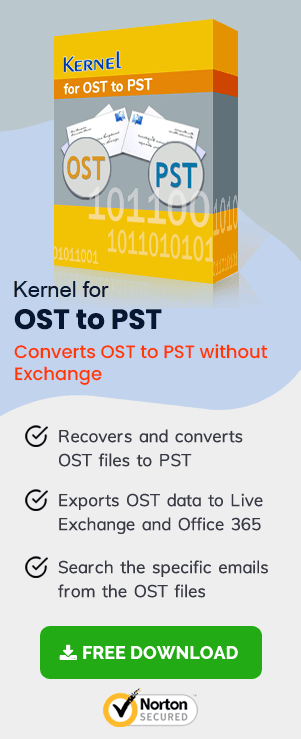Email users generally like Outlook due to its rich features and the ability to connect with multiple email servers simultaneously. Most of the time, Outlook opens smoothly, and you can see your default mailbox without any issues. Sometimes, when the user tries to open the OST file, it gives an error indicating an older OST file.

The error message says:
‘Outlook uses an old copy of your Outlook data file (.ost). Exit Outlook, delete the file, and restart Outlook. A new file will be automatically created the next time you initiate a send/receive.’
After reading, you will understand that you are using an older version of the offline OST file. To remove the error message, you should delete the OST file from its location and restart Outlook. Outlook creates a new OST file when it does not find a data file, and you can click the send/receive button.
Delete the OST file
To delete the OST file, you should know the location of the correct OST file. A different version of Outlook saves the OST files in another folder, and you should see the path to such folders.
|
Outlook 2019 |
Path |
|
Windows 10, Windows
8, Windows 7, Windows Vista |
C:\Users\admin\AppData\Local\Microsoft\Outlook |
|
Outlook 2016 |
Path |
|
Windows 10, Windows
8, Windows 7, Windows Vista |
C:\Users\admin\AppData\Local\Microsoft\Outlook |
|
Outlook 2013 |
Path |
|
Windows 10, Windows
8, Windows 7, Windows Vista |
C:\Users\admin\AppData\Local\Microsoft\Outlook |
|
Outlook 2010 |
Path |
|
Windows 10, Windows
8, Windows 7, Windows Vista |
Documents\Outlook File\ |
You can copy the path and paste it in the explorer section; then, you will connect directly to the folder where the OST file is present.

You can select the OST file and delete it. But make sure that you are not deleting another account’s data file.
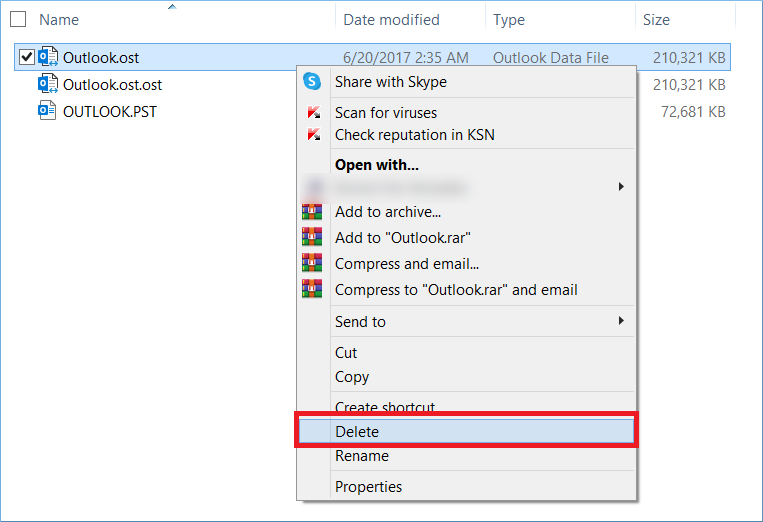
You can also search the data file from the Outlook application with the help of Account Settings.
- Start Outlook and click the File option.
- Click Account Settings>>Account Settings.
- Select your account and go to the Data File tab, then click Open File Location.
- The OST file is present at the opened location, and you can select and delete the file from here.
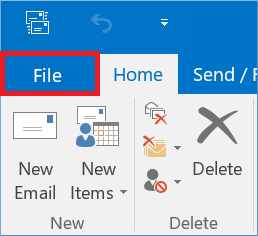
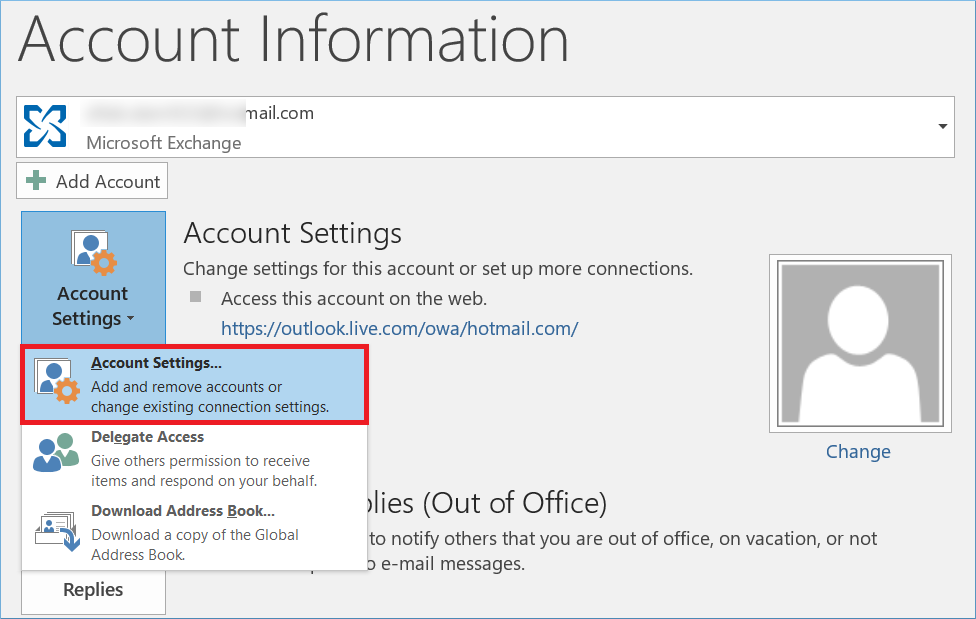
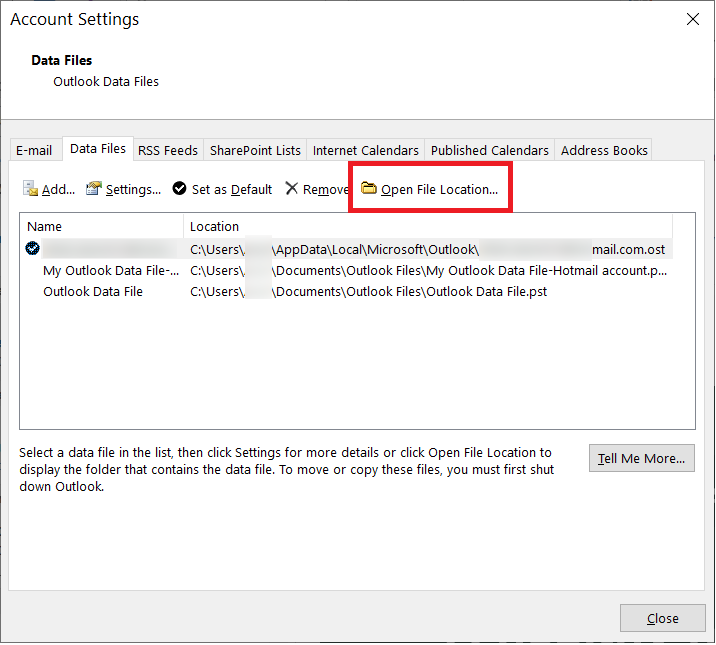
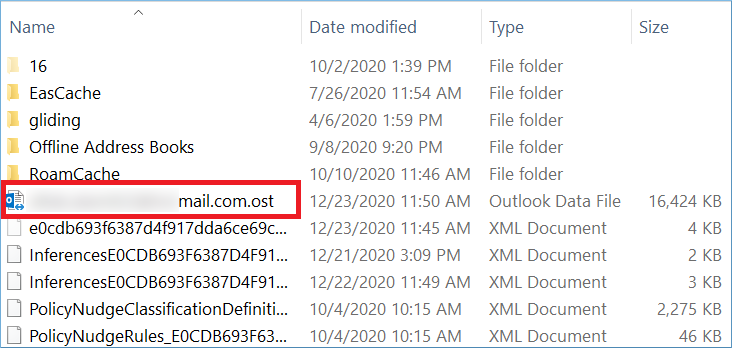
Find OST file location in Outlook 2010
In Outlook 2010, you can find and open the OST file using the following steps.
- First, click File and then go to the Info tab.
- Click Account Settings>>Account Settings.
- From the account list, select the Microsoft Exchange Server and then click the Change button.
- Further, go to the More Settings option in the Advanced tab. Click the Offline Folder File Settings.
Find OST file location in Outlook 2007
For the older version of Outlook 2007 users, you can find the OST file using the following steps.
- Start MS Outlook and go to the Tools tab. Then click Account Settings.
- Select the account, then click the Change button.
- Click the More Settings button.
- Under the Advanced tab, click the Offline Folder File Settings.
- The whole path of the OST file will be present there, and you can click the Browse button to go to the location directly.
Recreate the OST file
The Outlook will automatically recreate the OST file when you delete the older OST file from its default location. Later, you can open your account without getting an error.
Conclusion
As the OST file is created for the Exchange Account, you should be careful while deleting the older file for creating a new one. You may delete some important unsaved information from the mailboxes. That is why you should save the OST file information in other data files. Because you are unable to take a direct backup using the manual technique, a professional method is more suitable. OST Recovery tool can help you convert the OST file content to PST file. You can also access the corrupt and unavailable OST file and scan it for corruption.
If you are facing any error or issue due to the OST file, you should use OST Recovery software and convert OST to PST. There is a trial version available for free usage using which users can save the first 10 items per folder.

